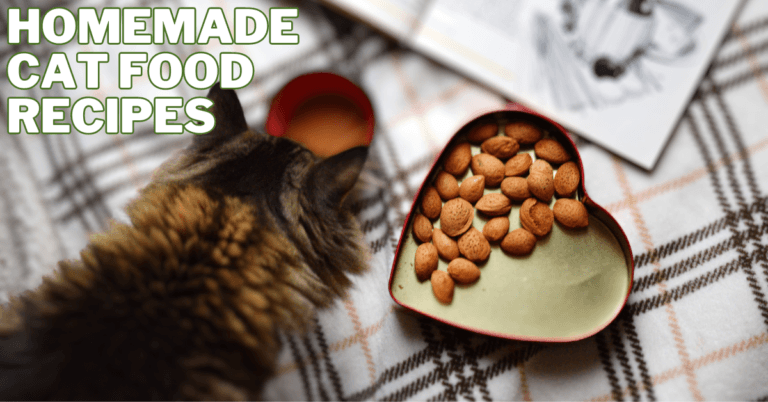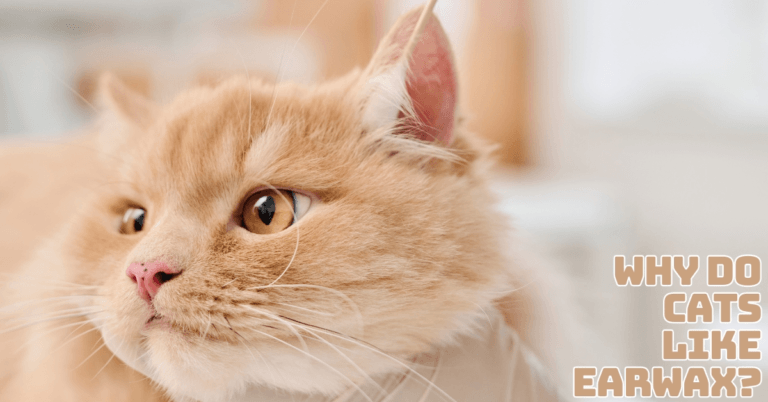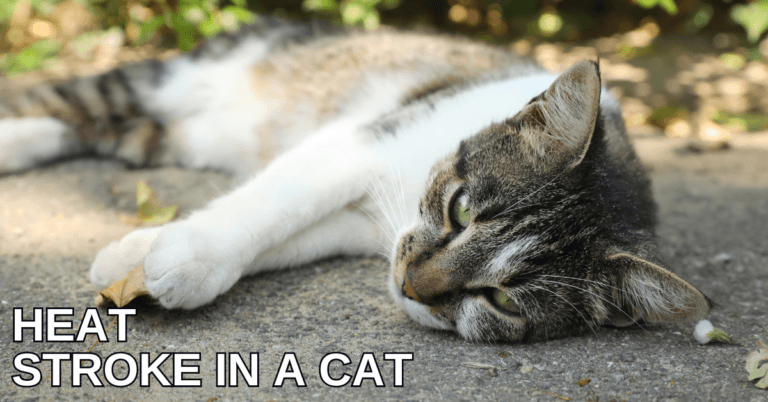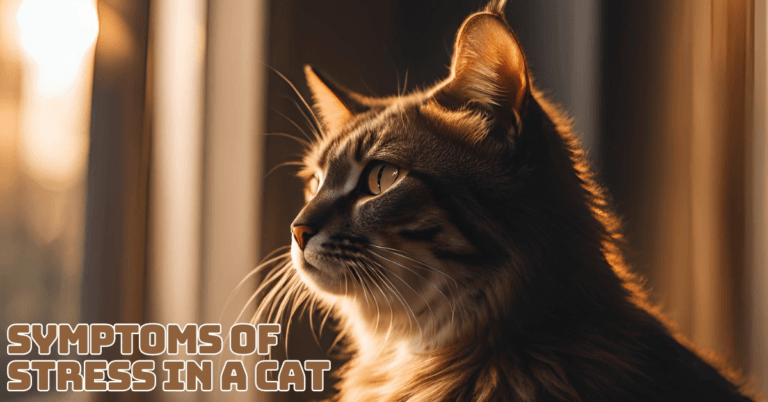Best Persian Cat Health Care Tips
Best Persian Cat Health Care Tips
The gentle and sweet Persian cat is recognized for its dignity and docility.
Persians are laid-back and easygoing but also exude a sense of nobility. Even if they aren't quick to hiss or scratch, they will become irritated if loud youngsters or dogs harass them.
Those who treat the Persian cat with the utmost care and tenderness will be rewarded with a lovely lap cat who likes being handled or having its hair rubbed.
The Persian cat may be the appropriate feline for your family if you desire a best friend who will repay all of your dedication and affection in kind.
It's important to remember that cats of any breed might acquire health issues at any moment.
The Persian Cat's Characteristics
The Persian cat is well-known for its charming, friendly, and peaceful demeanour. Persian cats require gentle handling despite their friendliness, which means no roughhousing or grabbing from small children.
They get along well with well-behaved children but like to be petted and admired rather than participate in vigorous activities. Persian cats and gentle dogs get along well with each other.
Persians enjoy sprawling out in a favourite position in the house with good vantage points to watch the household's goings-on, whether it's a comfortable recliner or a sun-filled window ledge.
Persians are cats who prefer to stay at home. To avoid overheating or tangling up their thick, long coats.
Persian cats adore their human families but are fine with being left alone for short periods as long as they are in their own homes, where they feel safe and secure.
The Persian Cat's History
The Persian cat's first written history dates from the early 1500s. Some breed enthusiasts believe the Persian cat is far older.
According to ancient hieroglyphs discovered in the area, longhaired cats may have been the ancestors of the Persian cat breed.
The first cat show in London in 1871 included the earliest instances of what would later become the Persian cat.
The exotic-looking cats with long coats piqued Queen Victoria's interest, as she was an avid animal lover.
She had several Persian cats, which led to the breed's popularity among other royals and upper-class British people.
The breed arrived in the United States in the late 1800s and early 1900s. Like the Persian cat in England, the Persian cat captivated the hearts of the American people.
According to the International Cat Association, the Himalayan is a distinct breed within the Persian breed group, with a light-coloured body and darker “points” of colour on the face, ears, legs, and tail.
The Persian was named one of the founding breeds by the Cat Fanciers' Association (CFA) in 1906.
According to the International Cat Association, the Himalayan is a distinct breed within the Persian breed group, with a light-coloured body and darker “points” of colour on the face, ears, legs, and tail.
Persian Cat's Care
1. Cat’s Coat
Begin cleaning your cat's fur when they are young. You should begin brushing your Persian at a young age to ensure that he or she accepts being brushed frequently.
Brush your kitty from the beginning so that she becomes accustomed to the experience.
If you don't begin brushing them at a young age, they may develop a hatred for being brushed, making it much more difficult to keep their coat in good condition.
Brushing your cat shortly before mealtime is one technique to assist him in accepting being brushed.

2. Brush Your Persian’s Fur Properly
Brushing over the outside surface of the coat without reaching down to the hair roots is a common mistake owners make.
Brushing your cat is similar to combing your hair: split the fur and comb knots out from the roots to the hair tip, working tangles-free as you go.
This mindset can be extended to your cat as well. Brushing your cat's fur in the same direction as your hair is most effective (and comfortable for the cat). The appropriate combing procedure entails the following steps:
- Part its hair and brush away loose knots with the comb's wide-spaced teeth. This procedure also aids in getting the fur to lay in one direction, making detangling easier.
- Work in parts with the slicker brush, moving from head to tail. This will aid in the removal of loose hairs.
- After cleaning the shed fur from your cat's coat, comb it again with the wide-toothed comb, moving from the root to the tip of the hair, and then finish by combing your cat's entire body with the narrow-toothed section of the comb.
3. Brush Your Persian Cat’s Fur Regularly
While combing a Persian's luxuriously long fur may not appear to be a major matter, it can rapidly become a nuisance. Matted fur occurs when your cat's fur becomes tangled.
These tangled clumps of fur can irritate your cat's skin and tangle to the point where they form a hard shell of fur on specific parts of her body, which can be very unpleasant.
Tangled fur might also make it more likely for your cat to get skin problems. It's far more difficult for your cat to clean the skin beneath the fur when it's matted. When a cat's skin isn't kept clean, illnesses are common.
4. Weight Control
Obesity is a serious cat disease that causes a surprising number of illnesses and fatalities.
This information is much better recognized and understood today than it was a few decades ago, yet far too many pet owners ignore the hazards of excess weight on their animals.
One of the most important contributors to developing arthritis, diabetes, and other life-threatening disorders is excess weight.
Everyone knows that losing a few pounds can enhance mobility and increase motivation to be active. Many people have personal experience with this. The same can be said about your pet.
According to research, excess weight can shorten a pet's life by up to two years and hasten the onset of arthritis by up to two years.
Diabetes is a genetic condition more likely to occur in overweight pets, although it may never become an issue in a healthy-weight cat. Obesity increases the likelihood of a cat developing diabetes.
Another potentially fatal illness in overweight pets is hepatic lipidosis or fatty liver. Hepatic lipidosis can develop in as little as 48 hours when an overweight cat stops eating for whatever reason.
So, how can you keep your pets in shape? It's crucial to understand your cat's eating habits.
The ordinary cat prefers to take only a few nibbles at a time, roughly 10-15 times each day.
Most cats respond well to this technique of free feeding, but boredom may increase the number of trips your cat makes to the food bowl.
You can help your cat stay healthy and have fun at the same time by keeping them active and involved in the play.
You and your cat will be pleased by a string attached to a stick with something crinkly or furry on the other end of the thread and a little imagination.
Food puzzles, such as kibbles in a paper bag or under an overturned basket or box, may encourage cats interested in food to romp and tumble.
If your cat's overeating is severe, you'll need to take a firm position and limit their food intake.
Rather than filling your cat's bowl to the brim, follow the feeding instructions on the food container and make sure your vet recommends a high-quality adult cat diet.
Replace your cat's bored-eating behaviours with more playtime and affection.
Cats adjust their wants for human interaction based on the amount of attention they receive; therefore, ignoring your cat will result in your cat ignoring you.
Similarly, spending a lot of time loving on and playing with your cat will make your cat crave that time with you. A more active cat—and its owner—will be healthier and happier.
5. Heart Care
Cardiomyopathy is the medical name for heart muscle illness, which can be hereditary or developed due to other heart conditions.
A thickening of the heart muscle is the most frequent, known as hypertrophic cardiomyopathy, or HCM.
Dilated cardiomyopathy, or DCM, is another condition that a taurine shortage can induce in the diet.
While DCM was formerly a severe issue, all major cat food manufacturers now include taurine in their products, and DCM is now uncommon in cats on high-quality diets.
Early detection of cardiomyopathy symptoms is critical. However, symptoms can be difficult to detect due to a cat's natural desire to hide sickness.
Rapid breathing, tiredness, and a lack of food are frequently the first signs that a pet parent sees.
These symptoms may appear to develop out of nowhere, lasting anywhere from a few hours to a few days, but in most cases, the cat has been suffering quietly for weeks to months and is now in serious peril.
HCM can also cause blood clots to form within the heart. These clots can then leave the heart and lodge in the major arteries carrying blood to the legs.
If this occurs, the cat will lose the function of both rear legs and the tail, which will turn chilly to the touch and appear exceedingly painful.
The cat is undergoing a medical emergency in any situation, whether rapid breathing or severe paralysis and requires immediate veterinarian attention.
Genetic testing for a specific gene defect that causes HCM is available for a few breeds of cats.
A heart murmur can be noticed during a basic physical check-in for most cats with cardiomyopathy, but a specific diagnosis requires more advanced medical imaging.
Another critical reason to have your pet tested twice a year for the rest of its life is to detect this disease early when therapy is most successful.

6. Dental Care
Dental disease is one of the most common chronic issues in pets that aren't brushed regularly.
Unfortunately, most cats, including your Persian, do not care for their teeth excellently.
Your cat is more prone to develop potentially serious dental problems if you do not provide additional assistance and care.
Food residue hardens into tartar, which builds upon the exposed surfaces of the teeth and eventually leads to gums and tooth root infections, causing dental disease.
Keeping your cat's teeth healthy by cleaning food residue regularly will help prevent or delay the need for extensive dental treatment.
Because this treatment can be distressing for your cat and costly for you, it's best to avoid it altogether.
Your pet may lose teeth or have internal organ damage in severe cases of chronic dental infection.
At the very least, your cat will be a more agreeable company if he isn't knocking everyone over with his nasty cat breath!
We'll show you how to brush your cat's teeth at home and assist you in scheduling routine dental checks.

7. Keep Your Persian Cat's Nose Clean
Keeping your cat's nose clean is the best way to help them fight off respiratory infections.
Keeping your cat's nose clean is critical since your Persian's shorter nose can quickly become plugged, making breathing harder for your cat.
You may clean out your cat's nose by wiping it with a warm, damp towel. Wipe your cat's nose at least once daily, and always wipe it if it appears slightly blocked.

8. Vaccinate Regularly
Persians are prone to respiratory illnesses because their short nostrils provide less protection against microorganisms.
Cats generally have an additional protective coating in their nostrils that helps keep germs and other infections out, but Persians do not.
As a result, it is essential to regularly take your cat to the doctor for booster vaccines against respiratory diseases.
If your cat has trouble breathing or sneezing violently, you should take her to the doctor.
Persians are prone to a variety of health problems. As a result, you should exercise extreme caution before breeding a cat with respiratory or other issues that could be passed on.
9. Wipe Away Any Extra Tears
The best thing you can do for your cat is to wipe away the excess tears that tend to discolour Persian fur and irritate its cheeks. If your cat has extra eye fluid on her face, wipe it off with a cloth or paper towel.
At least once a day, wipe the area around your cat's eyes. You should try to wipe it away if it appears damp beneath her eyes. However, do not wipe the eye since this may cause corneal scratches or ulcers.
10. Keep An Eye Out For Symptoms Of Diseases
While Persians have been selected for their distinct appearance, this same breeding has also made them vulnerable to certain ailments.
While there is little you can do to keep your cat from contracting the disease if (s)he is genetically predisposed, you can keep an eye out for symptoms and get your cat treated as soon as possible if (s)he develops the ailment.
11. Infections Preventable By Vaccination
Like all cats, Persians are susceptible to bacterial and viral illnesses such as panleukopenia, calicivirus, rhinotracheitis, and rabies, which immunization can prevent.
Because your cat is at a high risk of developing these diseases, the related immunizations are known as “core” vaccines and are strongly recommended for all cats.
Vaccines are also available to guard against other severe infections, such as the feline leukemia virus (FeLV).
12. Parasites
Worms and vermin can infest your Longhair's body inside and out. Fleas, ticks, and ear mites can infest her skin and ears.
Drinking polluted water, treading on contaminated dirt, or being bitten by an infected mosquito are all ways for hookworms, roundworms, heartworms, and whipworms to enter her system.
Some of these parasites may be spread from person to person, posing a serious risk to everyone.
Because a fecal exam can detect a variety of parasites, it's a good idea to bring a fresh feces sample (in a smell-proof container, please) to your pet's twice-yearly wellness checks. To keep her healthy, we'll also recommend preventive medicine.
13. Neuter Or Spay
Spaying your Persian is one of the nicest things you can do for her (neutered for males).
In most cases, the ovaries and the uterus are surgically removed in females, whereas the testicles are surgically removed in males.
Spaying or neutering your pet reduces the risk of some cancers and removes the chance of your pet becoming pregnant or fathering undesired litters.
Neutering reduces the prevalence of urine spraying and marking activities in males, and both sexes become less territorial and less likely to roam.
This technique also allows us to diagnose and treat some of the problems your cat is prone to acquire while your pet is under anesthesia.
If your cat requires hip X-rays to rule out dysplasia or a complete dental exam to rule out stomatitis, these treatments can be done simultaneously as the spay or neuter to reduce stress on your cat.
Routine blood testing before surgery also aids us in detecting and avoiding common issues that enhance anesthesia or surgical risk.
It may seem like a lot to remember, but don't worry; when the time comes, we'll go over all of the specific issues we'll be looking for with you.
Popular Persian Cat Varieties

1. Chinchilla Persian Cat
Chinchilla Persian cats are an eye-catching variant. These cats have bushy, thick coats. They were called after the South American rodent with a thick, white coat.
While there are a few colour variants, Chinchilla Persian cats are usually silvery white. Their black-rimmed doll-like eyes, lips, and nose. These cats have a light undercoat and a topcoat that is delicately coloured. They also have either green or blue eyes.
Because Chinchilla Persian cats are purebred, they are prone to health issues. They are predisposed to renal disease and heart illness. They also have flat faces, which can create breathing problems.

2. Doll Face Persian Cat
This is the Traditional or Old Fashioned Persian. Breeders of this type claim they are the most closely related to the original Persian cats.
The snout of Doll Face Persians is not as short as those of other kinds. Because their noses are of typical length, kids can experience fewer issues with their breathing and eyes.

3. Red Persian Cat
A red Persian cat's coat will be vivid crimson, with deep and rich tones. There should be no shading, marks, or ticking. Their lips and chin should be the same colour as their coats, with a brick-red nose and paws. Their eyes will be copper in colour.

4. Peke-Face Persian Cat
The Peke-Face Persian is the “show” Persian that many of us now recognize. Their name is derived from the resemblance between their facial characteristics and those of a Pekingese dog.
A genetic mutation causes this Persian variety's flat, or brachycephalic, face form. While it gives them an appearance that breeders like, the shorter snout can make breathing extremely difficult for these cats. They may also experience ocular issues such as non-drainage and stains.

5. Cream Persian Cat
With a cream-coloured buff coat that is uniform throughout the body and without markings.
For displaying courses, lighter tones of cream are used. A whipped cream Pink paw pads and nose leather will be on the Persian cat. Their eyes will be copper in colour.

6. Teacup Persian Cat
Teacup Persians may appear to be the cutest cats on the market, but they might have major health concerns.
Attempting to selectively breed a cat with pre-existing health difficulties, such as the Persian, into a smaller version of itself might worsen these issues.
Teacup Persians, for example, might have significant respiratory problems. Like many other tiny breeds, they might have difficulty managing their body temperature and are susceptible to stressful conditions. Because of their health issues, this isn't a very recommended variation.

7. White Persian Cat
White Persian cats will have snow-white coats with no cream. The leather on their noses and paw pads will be pink.
Their eyes should be either a magnificent copper colour or a deep blue colour. The Persian breed standard allows for odd-coloured eyes as long as both eyes have an equivalent depth of colour.

8. Black Persian Cat
The coat of a black Persian cat should be coal black, with no lighter undercoat or rust-red hair tips.
Their noses should be black, and their paw pads can be brown or black. Their eyes will have a beautiful copper colour.

9. Cream Smoke Persian Cat
A cream cigarette Persians have a white undercoat with many cream tips. The white coating should be visible only when they move.
They should have ear tufts and a beautiful white frill. They have pink noses, pink leather paw pads, and copper eyes.

10. Silver Tabby Persian Cat
Tabby silver Persians can be traditional or mackerel. They have a light, pure silver backdrop with thick black patterns.
Their undercoat will be white. Their noses are brick-red, and their paw pads are black. Their eyes might be copper, hazel, or green.

Conclusion
Do you love Persian cats? You may let us know your favourite types. If you already have and need any help with healthcare advice, feel free to comment here. We always try to share authentic solutions.
I trust you enjoyed this article on the Best Persian Cat Health Care Tips. Please stay tuned for more blog posts to come shortly. Take care!
JeannetteZ
>>>Please click here to read my all-inclusive article about the Best Cat Care Tips For Beginners<<<
Your Opinion Is Important To Me
Do you have thoughts, ideas, or questions? I would love to hear from you. Please leave me your questions, experiences, and remarks about this article on the Best Persian Cat Health Care Tips in the comments section below. You can also reach me by email at Jeannette@Close-To-Nature.org.
Disclosure
This post may contain affiliate links. I earn from qualifying purchases as an Amazon Associate and other affiliate programs. Please read my full affiliate disclosure.
You might also enjoy these blog posts:
Easy Steps Of Growing Plums In Containers
Easy Ways To Grow Broccoli In Containers
Easy Steps Of Growing Lime Trees In Pots


















